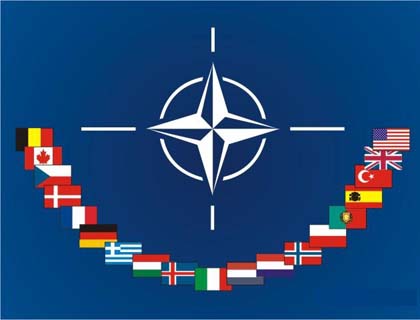KABUL - The international military coalition in Afghanistan says it has closed 202 bases as part of its drawdown in troops, and has transferred more than that number to the Afghan government.
NATO forces spokesman Lt. Col. David Olson says all the shuttered facilities were small — ranging from isolated checkpoints to bases housing a dozen to as many as 300 soldiers. He says most of the closures have been along the country's major highways and that they have been spread across nearly every province.
Olson says another 282 bases of a similar size have been handed over to the Afghan government.
That means international forces now operate about half as many bases in Afghanistan as in October of 2011, when they ran about 800 of them in the country.
A senior U.S. logistics commander rejected accusations on Sunday from frontline combat troops that the complicated rollback from bases across Afghanistan and packing up of military equipment was disrupting NATO-led operations against insurgents.
U.S. Brigadier-General Steven Shapiro said around 400 bases had been successfully closed or handed to Afghan security forces from a high of around 800 last October as part of a withdrawal of foreign troops from combat operations winding up in 2014.
"To the soldiers out on patrol, it's transparent," said Shapiro, in charge of transferring excess non-military equipment to Afghan forces.
"Most of the soldiers, sailors, airmen, Marines who are operating those vehicles don't see that business side of the army."
The pullout of more than $60 billion worth of war-fighting equipment from Afghanistan is expected to be one of the most complicated logistical exercises in recent history, much more difficult than the pullout from Iraq.
On top of mountainous terrain and Taliban attacks, NATO's task has also been complicated by unpredictable border closures enforced by Pakistan in retaliation against U.S. air strikes, shutting down vital land routes and disrupting plans.
During the Iraq withdrawal, U.S. and British forces were able to move men and equipment out to neighboring Kuwait for packing, repair and washing to remove contaminants, whereas in Afghanistan the job must be done on local bases.
Soldiers say that with one armored vehicle taking days or weeks to ready for transport and with more than 60,000 vehicles to shift, the preparation is a major distraction to combat operations and training of Afghan security forces.
Incoming U.S. units have also been cut in size as part of a 28,000-strong reduction ordered by U.S. President Barack Obama to be completed by September ahead of November presidential elections.
"It's a nightmare. We barely have enough guys to cover our area, let alone get ready to pack up," a U.S. officer recently told Reuters in volatile eastern Kunar province ahead of a pullout from several bases and transition to Afghan control.
But Shapiro said around 3,000 logistics troops were working out which non-military equipment would be left behind for Afghan forces, from base fridges to tables and chairs, to generators and air-conditioning units, easing the strain on combat troops.
And where they were handed over, bases would be fully operational, he said, with U.S. troops prioritizing Afghan operational needs over American requests for vital equipment like generators.
U.S. commanders had learned lessons from the Iraq withdrawal, Shapiro said, the most important of which was the need for early planning to avoid bottlenecks and the buildup of equipment slowing the exit from the country.
NATO's Director of Engineering, Major-General Bryan Watson, earlier this month said that most bases closed or handed over so far were smaller combat outposts and observation positions, plus a handful of mid-size bases housing around 800 to 1,000 troops.
The biggest challenges would be ten to fifteen much larger bases like Shindand Air Base in western Herat province, as well as Kandahar and Bagram air bases, which are the size of small cities. (Agencies)

